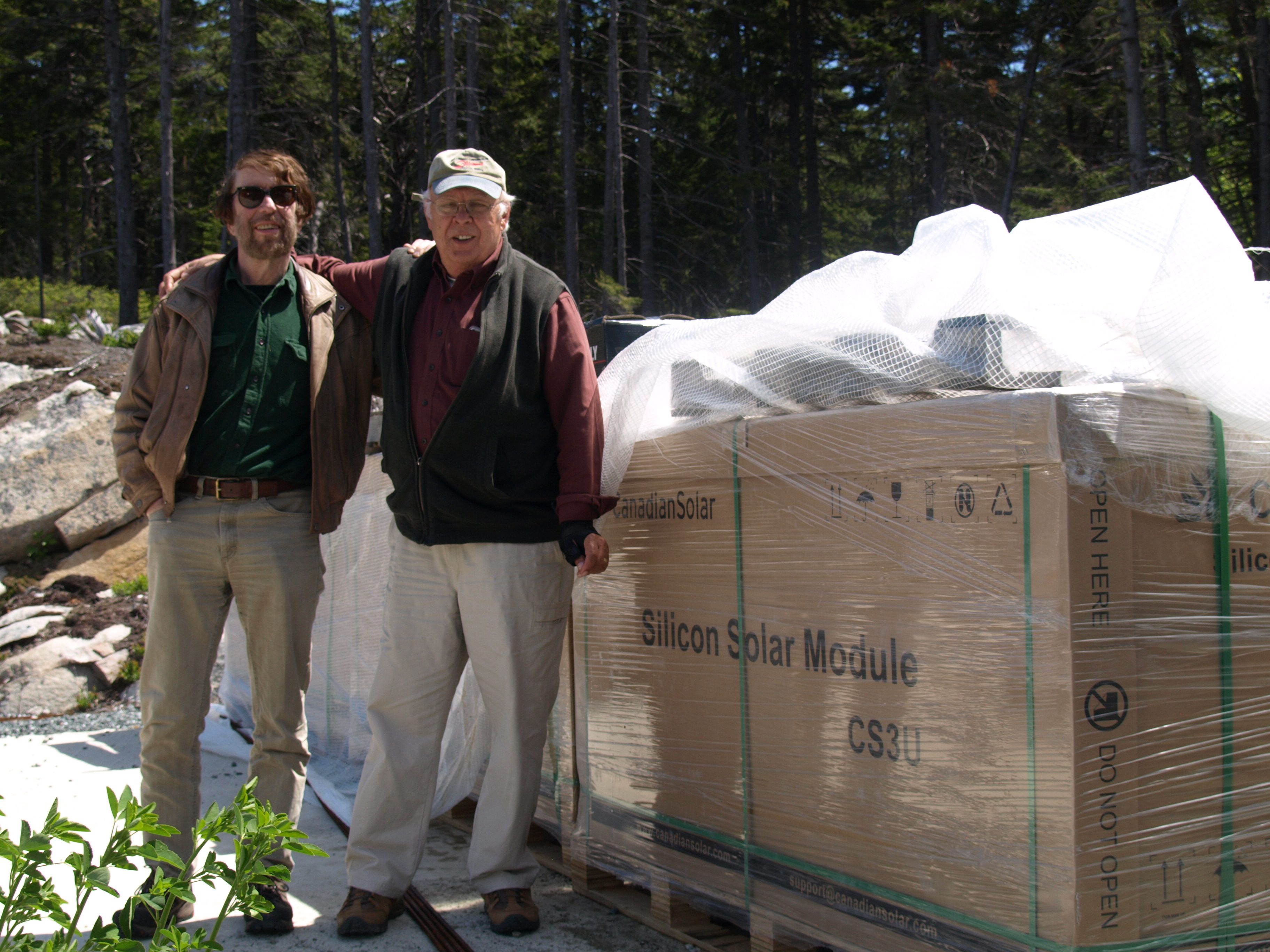During Hurricane Sandy in 2012, Hoboken, New Jersey “literally became an island,” recalled its mayor at the time, Dawn Zimmer, during a recent talk she gave in Maine. The city was 80 percent submerged, and generators nearly ran out of diesel fuel.
That traumatic event reinforced for residents there how energy choices shape community resilience. For true island communities, though, it doesn’t take a storm to recognize their vulnerability.
Isle au Haut is a case in point: the 7-mile undersea cable that carries its electricity passed its expected lifespan nearly two decades ago. A replacement cable would cost $1.7 million, potentially doubling the already high electricity costs of island ratepayers.
So the community decided to chart a new course, one that might guide others as Maine reinvents its energy system to reduce carbon emissions. Next year, Isle au Haut expects to launch a flexible microgrid reliant primarily on solar generation and storage, freeing it from the mainland grid and markedly reducing its diesel fuel use.
The motivation was to economize, not necessarily decarbonize, says James Wilson, a retired marine economist who serves as president of the Isle au Haut Electric Power Company (IHEPC): “We never sold this as a green project. We sold it as the most economical option.”
To be resilient, an energy system must be affordable as well as reliable and storm-ready, notes a 2017 paper from the American Council for an Energy-Efficient Economy. Lower-income households with high utility bills and inadequate weatherization have less capacity to withstand unexpected events and to recover from them.

Solar power made sense for Isle au Haut, Wilson says, because “it’s economical, very unobtrusive and requires much less maintenance [than wind turbines]; it’s more of a self-tending system.” Costs remain stable, and solar generates most power during the summer season, when the island’s population swells.
Ground-mounted solar panels get high marks for longevity and resilience, Wilson adds. The ones on Isle au Haut are under warranty to produce 95 percent of the stated power output for 25 years, and will be anchored into ledge to weather high winds. Their glass is built to withstand golf-ball-sized hail hitting at 120 mph.
To address the intermittent nature of solar power, the community will rely on two relatively new energy storage technologies: supercapacitors and air-to-water heat pumps (combined with large thermal storage tanks to help heat town buildings and residences). A diesel generator will be used intermittently when storage capacity falls short.
A Portland-based software company that specializes in “engineered ecosystems,” Introspective Systems, helped design Isle au Haut’s new grid using an approach grounded in “resilience and reliability,” says its CEO Kay Aikin.
“It breaks the grid up into lots of little cells,” Aikin explains, each of which can respond to price signals at the building level. Devices there will use artificial intelligence to run appliances like heat pumps and refrigerators when prices are lower, while dashboards keep residents informed of real-time prices.
Unlike a centralized grid, with smart meters that feed data back to a command center, “there is no two-way communication,” Aikin says, to protect customers’ privacy and minimize cybersecurity threats.
Aikin anticipates that over the next two decades, the system will allow Isle au Haut’s electricity rates to decline slightly while markedly reducing heating fuel costs. The company’s models also forecast a 76 percent drop in carbon dioxide emissions.
Bryan Carroll, IHEPC’s general manager, sees this as “a model first and foremost for the islands of Maine” and – more generally – for rural utilities. Aikin envisions it being used by college campuses and industrial complexes that have their own microgrids. “Eventually, those pods will merge and share systems,” she predicts, but “major deployments” may not occur for another five to 10 years.
The Isle au Haut project has “the ability to really change the conversation,” says Ian Burnes, director of strategic initiatives at Efficiency Maine Trust. It provided an “innovation” grant to the project, and Burnes is eager to see how the island’s systems – such as storing thermal energy in water tanks, and having devices activate in response to price – perform.
As Maine begins to accelerate its reliance on renewable power, Burnes notes, “there will be a huge need” for these sorts of innovations.

Last spring’s legislative session “accomplished more for renewable energy than I’ve seen in the previous 12 years combined,” notes Seth Berry, House chair of the Legislature’s Joint Standing Committee on Energy, Utilities and Technology. One measure he sponsored (LD 1181) will help more communities consider alternatives to traditional transmission upgrades.
The Public Utilities Commission will now be required to consider non-wire alternatives (like solar or wind) when utilities propose a transmission upgrade. “No other state, to my knowledge, has done anything like this,” Berry says.
The resilient and responsive system that Isle au Haut is pioneering could potentially be scaled up, but it’s not likely to be adopted by utilities committed to a central command structure and motivated by profit. Maine’s larger investor-owned utilities expect ratepayers to “pay them more to do the forward-thinking,” Berry notes, “and we can’t afford that.”
The affordability of more resilient, renewable power hinges on storage technology, and the Legislature has commissioned a study of that due in December.
“The overall cost of renewables is now lower than many fossil fuel sources,” says Rep. Tina Riley of Jay, a master electrician and contractor who sponsored that measure, but “without storage, it leaves a big hole in grid reliability.” Further research, she says, should illuminate the “technical, logistical and policy barriers” to grid-scale storage – and greater energy resilience.
“We need to move forward quickly,” Riley adds, “but in an informed way.”







